Idea by
HANGHAR & OWN Foundation
Call for ideas 2021
LEX CAPITA
LEX CAPITA
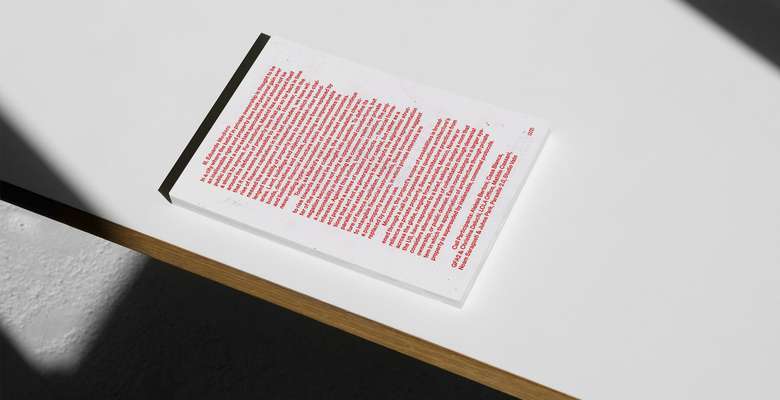
- Systemic changes
With the rise of finance capitalism in the last decades, we have witnessed the emergence of immaterial assets that challenged the ability for property laws to establish clear boundaries. Land, buildings and objects have now been replaced by bonds, derivatives and stocks, a limitless financial structure which accommodates the never-ending hyper-accumulation of our neoliberal economies.
Today as real estate market values continue to rise towards another collapse, the accumulative character of the urban must be brought into question. Against this infinite, totalitarian condition, the project presents a series of isolated products—financial formations that act not as generators for capital, but an alternative real estate network that adopts the algorithmic structure of finance capitalism. Assigning a material representation to intangible financial instruments, these formations suggest a post-property scenario, in which private interests are superseded by the commons.

The Stock Interchange is the most ubiquitous representation of the
abstract, circulatory decree of the market. This financial formation subverts the
conventional trade services of stock exchange buildings to create a closed-system of
CDOs, or collateral debt obligations, that are constantly repackaged and introduced
back into the system. The material result is a centralized network that contains the
physical infrastructure to hold itself along with a symbolic, useless trade hall.
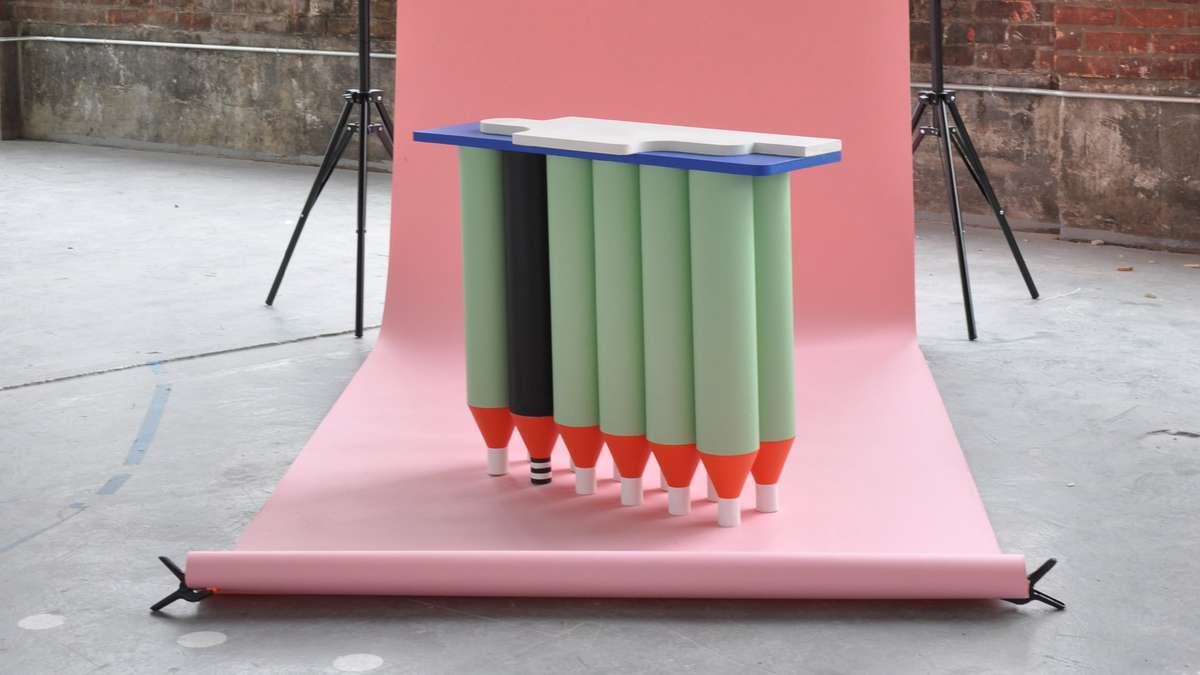
The exhibition apartment is a classic spatial product of real estate. It allows
buyers to imagine themselves in the physical space while permitting
developers initial minimal investment. This first financial formation departs
from the use of credit swaps to create a shared ownership scheme in which
the asset is infinitely swapped to constantly increase its value. The excess of
capital is then extracted into a co-op that runs the structure.
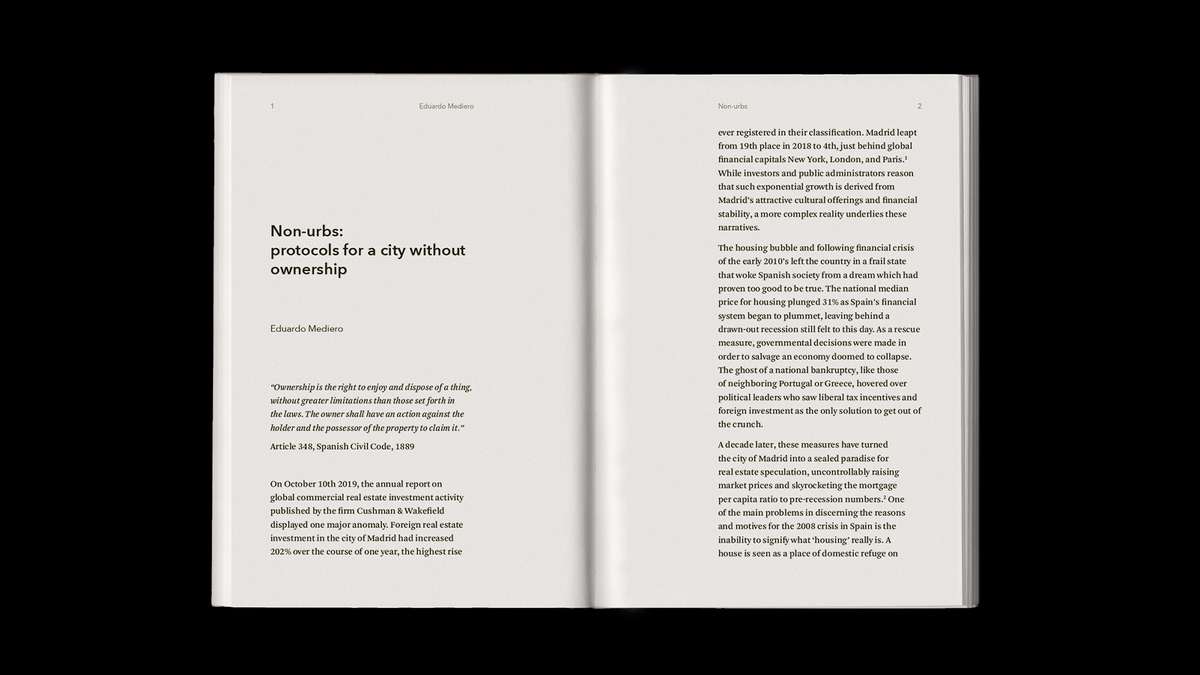
Against the infinite, totalitarian character of the urbs, the non-urbs presents itself as
isolated and delimited. It is tangible, material and bounded. A constellation of individual, enclosed objects, independent but highly interconnected. The non urbs is not an alternative but a resistance, the non-urbs is a city within the city.
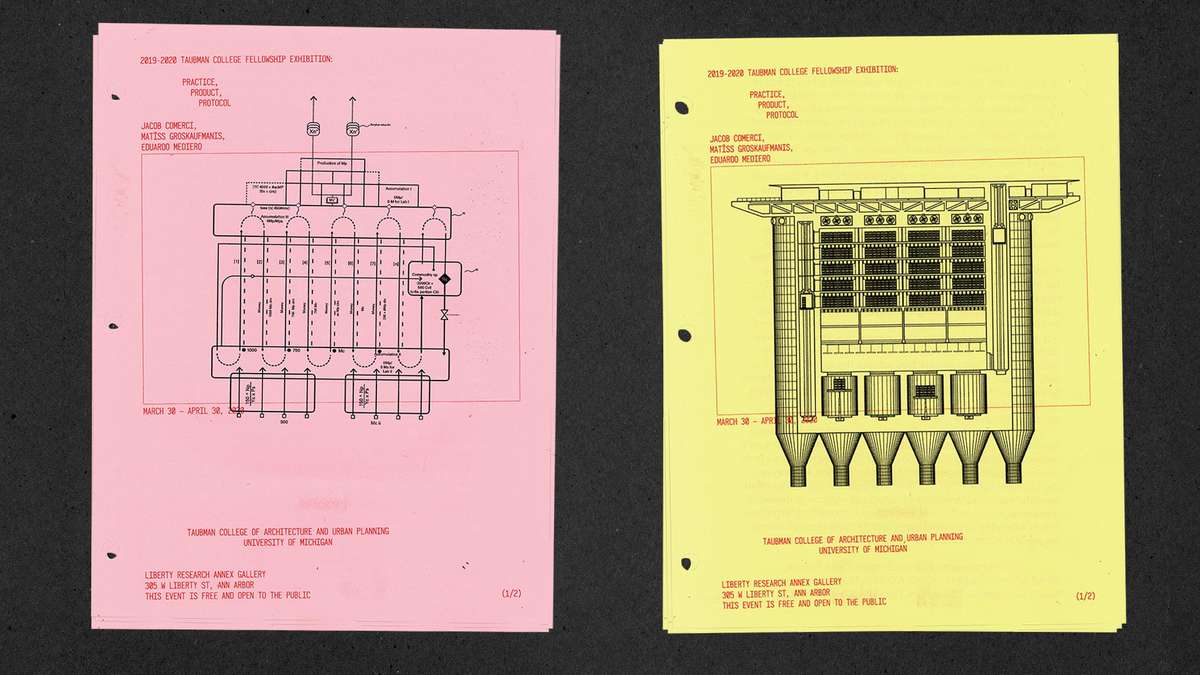
These complex, abstract systems are represented through a series of diagrams that exemplify the possibility of translating its immaterial presence into a quantifiable medium. Within an urban space increasingly governed by financial capital and its algorithms a series of alternative post-financial formations increase the available liquidity of the markets upon achieving greater ease and speed of its transactions. Or put in other words, built forms as a generator of capital.

The Advertising Office bases its existence in the reciprocal income of capital through self-promotion. A series of time-based bonds are literally stacked on top of each other to
shield the shares from the volatility of the market. These bonds are materialized into
a vertical office structure that is able to generate profit by simply advertising itself.
LEX CAPITA
LEX CAPITA

- Systemic changes
With the rise of finance capitalism in the last decades, we have witnessed the emergence of immaterial assets that challenged the ability for property laws to establish clear boundaries. Land, buildings and objects have now been replaced by bonds, derivatives and stocks, a limitless financial structure which accommodates the never-ending hyper-accumulation of our neoliberal economies.
Today as real estate market values continue to rise towards another collapse, the accumulative character of the urban must be brought into question. Against this infinite, totalitarian condition, the project presents a series of isolated products—financial formations that act not as generators for capital, but an alternative real estate network that adopts the algorithmic structure of finance capitalism. Assigning a material representation to intangible financial instruments, these formations suggest a post-property scenario, in which private interests are superseded by the commons.
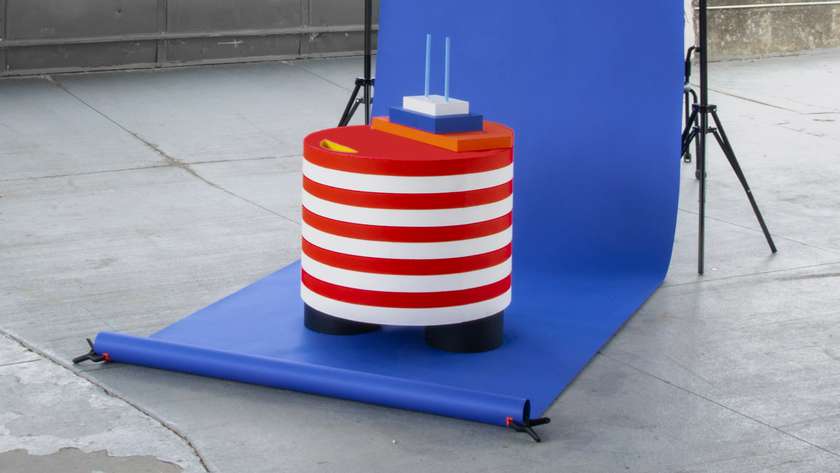
The Stock Interchange is the most ubiquitous representation of the
abstract, circulatory decree of the market. This financial formation subverts the
conventional trade services of stock exchange buildings to create a closed-system of
CDOs, or collateral debt obligations, that are constantly repackaged and introduced
back into the system. The material result is a centralized network that contains the
physical infrastructure to hold itself along with a symbolic, useless trade hall.
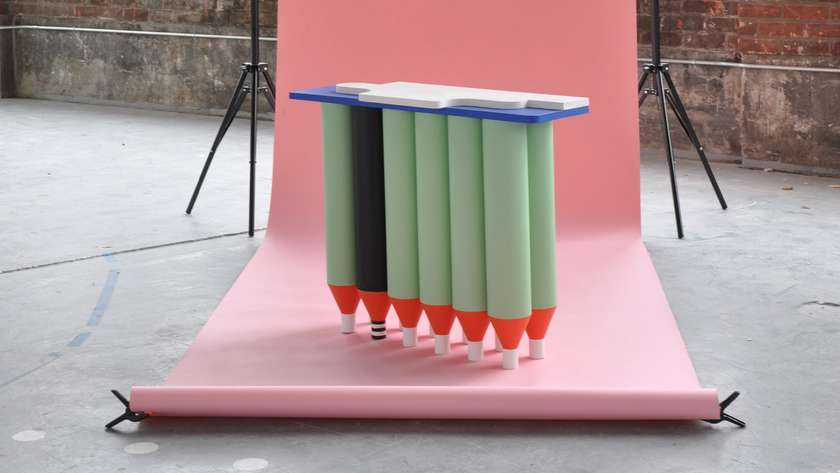
The exhibition apartment is a classic spatial product of real estate. It allows
buyers to imagine themselves in the physical space while permitting
developers initial minimal investment. This first financial formation departs
from the use of credit swaps to create a shared ownership scheme in which
the asset is infinitely swapped to constantly increase its value. The excess of
capital is then extracted into a co-op that runs the structure.
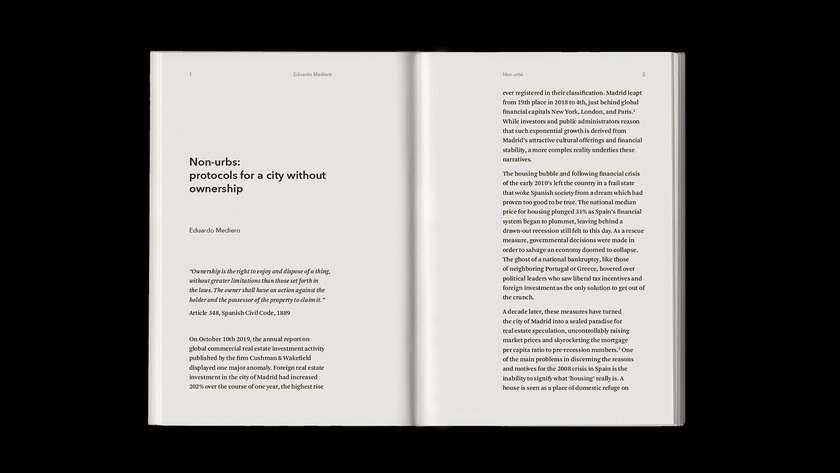
Against the infinite, totalitarian character of the urbs, the non-urbs presents itself as
isolated and delimited. It is tangible, material and bounded. A constellation of individual, enclosed objects, independent but highly interconnected. The non urbs is not an alternative but a resistance, the non-urbs is a city within the city.
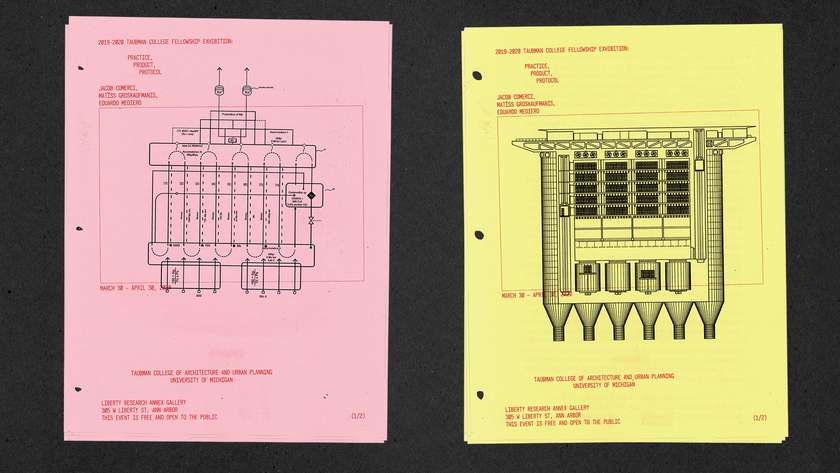
These complex, abstract systems are represented through a series of diagrams that exemplify the possibility of translating its immaterial presence into a quantifiable medium. Within an urban space increasingly governed by financial capital and its algorithms a series of alternative post-financial formations increase the available liquidity of the markets upon achieving greater ease and speed of its transactions. Or put in other words, built forms as a generator of capital.
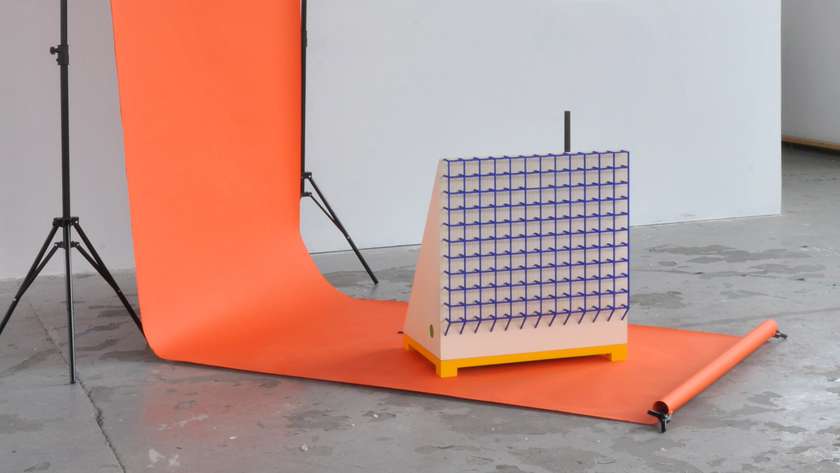
The Advertising Office bases its existence in the reciprocal income of capital through self-promotion. A series of time-based bonds are literally stacked on top of each other to
shield the shares from the volatility of the market. These bonds are materialized into
a vertical office structure that is able to generate profit by simply advertising itself.